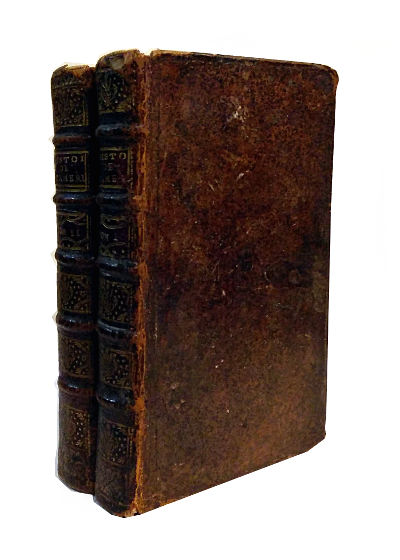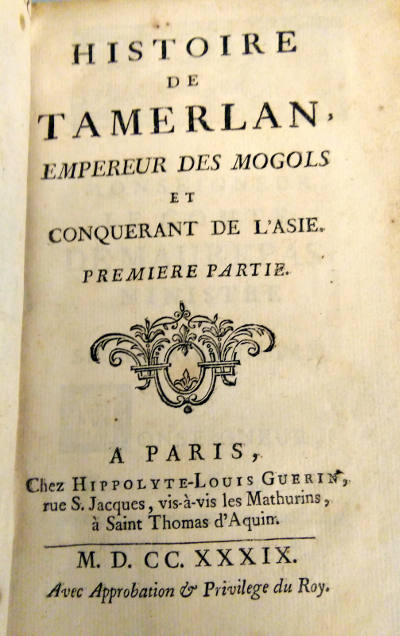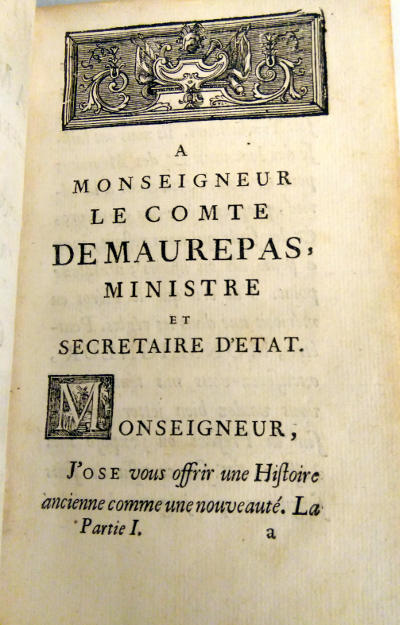All text in French.
About the book:
A biography of Tamerlane (Timur), founder of the Timurid Empire in Iran and Central Asia, written by a Jesuit priest who compiled the works of two earlier writers: Persian historian Sharaf ad-DīnʿAlī Yazdī from his Zafarnama, and Syrian traveller/writer Muhammad ibn Arabshah, who lived during Timur’s reign.
About Tamerlane (from Wikipedia):
Timur (9 April 1336 – 17–19 February 1405)was a Turco-Mongol Persianate conqueror who founded the Timurid Empire in and around modern-day Iran and Central Asia, becoming the first ruler of the Timurid dynasty. As an undefeated commander, he is widely regarded to be one of the greatest military leaders and tacticians in history. Timur is also considered as a great patron of art and architecture, as he interacted with intellectuals such as Ibn Khaldun and Hafiz-i Abru. He is often credited with the invention of the Tamerlane chess variant, played on a larger 10×11 board.[9] According to John Joseph Saunders, Timur was “the product of an Islamized and Iranized society”, and not steppe nomadic.
Born into the Barlas confederation in Transoxiana (in modern-day Uzbekistan) on 9 April 1336, Timur gained control of the western Chagatai Khanate by 1370. From that base, he led military campaigns across Western, South and Central Asia, the Caucasus and southern Russia, and emerged as the most powerful ruler in the Muslim world after defeating the Mamluks of Egypt and Syria, the emerging Ottoman Empire, and the declining Delhi Sultanate of India. From these conquests, he founded the Timurid Empire, but this empire fragmented shortly after his death.




